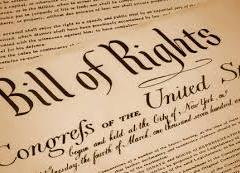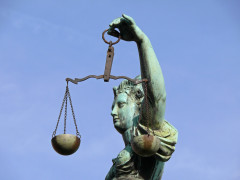I am constantly amazed how people who defend the right to bear arms as arising from the founders’ vision conveniently forget that the founders were wary of what they called a “standing army.” This oversight is more than a simple irony. It is a glaring example of how they pick what they like and leave the rest.
This point was brought home to me again as I was re-reading the state constitutions that were adopted before the Constitution of the United States. It is an exercise everyone who argues about rights should be forced to do at least periodically. Many of those founders involved in the development of the US Constitution had already been involved in drafting earlier state constitutions for the colonies in the process of declaring their independence. There are many articles in the state constitutions that are very surprising, reminding us that founders’ understanding of rights was the results of a process and that rights have a context and a history.
What caught my eye this time was the following article in the Virginian Declaration of Rights, an article which is the predecessor of the Second Amendment in the U.S. Constitution. Here it is:
SEC. 13. That a well-regulated militia, composed of the body of the people, trained to arms, is the proper, natural, and safe defence of a free State; that standing armies, in time of peace, should be avoided, as dangerous to liberty; and that in all cases the military should be under strict subordination to, and governed by, the civil power.
What is striking here is not only the similarity to the current second amendment but also the distance we have traveled from the views represented here. Virginia was the first state to declare independence from Great Britain and set a framework that many other states that followed adopted. Indeed, James Madison who first drafted what became the Bill of Rights was a Virginian and modeled his first draft after the earlier Declaration of Rights by Virginia.
This “section 13” of the Virginia Declaration is thus a predecessor of the Second Amendment. But it is concerned, not with individual rights per se, but with the right of a state to have a militia. The militia, which is an armed body that comes together as needed out of citizenry, is contrasted with a “standing army” which is the way the founders and their predecessors described a “professional army.” The contrast is interesting in multiple ways. First, it shows us the founders’ suspicion of a professional army and preference for a military drawn together from citizenry on the spur of the moment. They assumed that those who lived among the population, would be more likely to fight vigorously to defend it.
It is ironic that those who so often defend the right to bear arms based on their commitment to the views of our founders, conveniently forget that the founders harbored deep suspicions about a professional military. The founders would have likely been aghast at the amount of taxes today that go to support a standing army. Yet those who defend the right to bear arms are often also those who defend the budgets of the Pentagon. Were they consistent in their appeal to the founders, they should defend the right to bear arms but not a professional military. But of course those who appeal to the view of the founders take what they like and leave the rest. They appeal to the founders when convenient and ignore them otherwise.
This selective memory underscores another related point. There is no single, self-evident and stable notion of rights that is persistent across time. What we choose to remember and what we choose to forget is part of the process of adapting rights to new circumstances and values.




